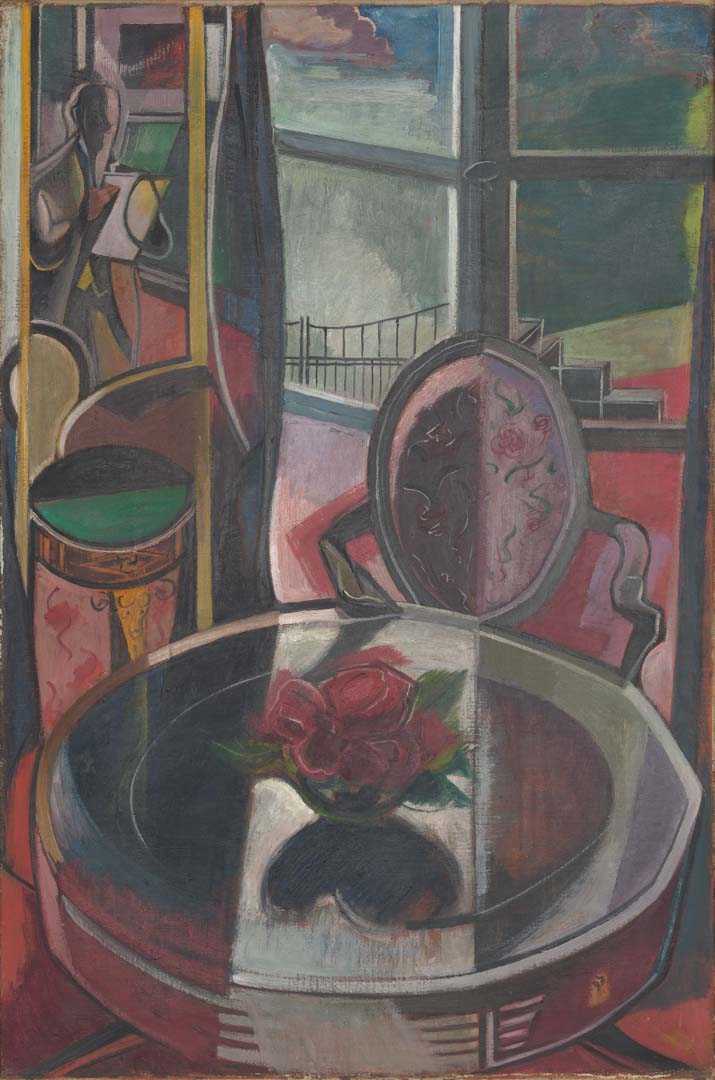We acknowledge the Traditional Owners of the land on which the Queensland Art Gallery | Gallery of Modern Art stands and recognise the creative contribution First Australians make to the art and culture of this country.

Roy de Maistre / Australia/England 1894–1968 / (Studio interior) c.1935 / Oil on canvas / Purchased 1970 / Collection: Queensland Art Gallery | Gallery of Modern Art / © Caroline de Mestre Walker
Roy de Maistre(Studio interior) 1935
On Display: QAG, Gallery 12
Roy de Maistre and fellow painter Roland Wakelin developed a theory of art whereby he proposed an alliance of music and colour based on the music scale and the prismatic colour spectrum. For example, if the yellow was equivalent to middle C, the lighter tone represented the higher octaves and the darker shades represented the lower notes. de Maistre believed colours which were allied to the notes of harmonising chords in music would themselves harmonise.
Australian interests in art following World War One shifted toward the nationalistic image. A disinterest in European modernity, which included abstract art, required de Maistre to apply his theory of colour to work as an interior decorator. He returned to London to live in 1930 — having first travelled there in 1923 as a New South Wales Travelling Art Scholar — where he found the audience he needed to maintain his practice.
(Studio interior) c.1935 is an example of the success de Maistre gained for the application of his combined theoretical application of colour and his technical control of form and composition. His mastery of cubism makes possible the inclusion of multiple perspectives within the two-dimensional picture plane. The painting offers a glimpse into a scene within the artist’s studio, two fragmented views out of the studio through angled windows and another that looks back at the artist in the reflection of a mirror.
Roy de Maistre is one of Australia’s most important painters. He began his art studies in 1913 at Sydney’s Royal Art Society concurrently with music studies at the Sydney Conservatorium.
He was introduced to the art of Cézanne and to Post-Impressionism by a fellow student Norah Simpson who had studied in England at the Westminster School under Gilman, Gore and Ginner. These were important formative influences. Soon afterwards de Maistre enlisted for World War One (1916) and was discharged after nine months with tuberculosis. During his recovery he became concerned with the psychological effects of colour and mental health. With Roland Wakelin he invented and patented a colour disc. De Maistre invented a colour-music scale in which the spectrum colours were related to the notes of the diatonic scale.
From 1923 to 1926 de Maistre spent three years painting in England and France on the New South Wales Travelling Scholarship. This period led to his interest in Cubism and in the intellectual analysis and stylisation of form. He moved permanently to England two years later, beginning a friendship with Francis Bacon to whom he gave painting tuition. His work was acquired for the Tate Gallery and in 1960 a retrospective of his work was held by the prestigious Whitechapel Gallery, London.